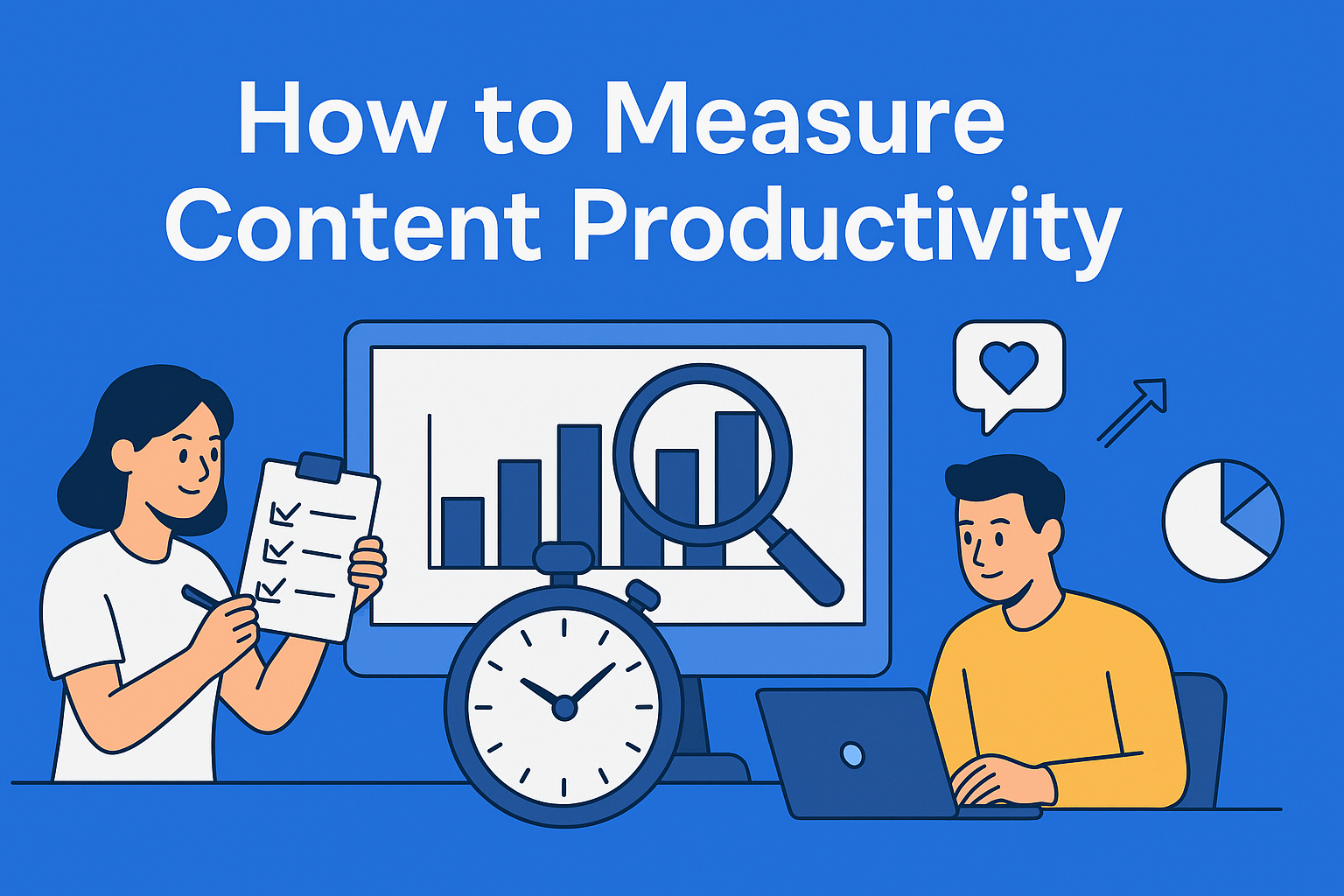How to Measure and Analyze Your Content Team’s Productivity
Measuring a content team's productivity isn’t just about counting posts,it’s about tracking efficiency, impact, and quality. By monitoring key metrics, automating workflows, and optimizing processes, teams can speed up production, boost engagement, and achieve better results with fewer bottlenecks.

In content marketing, team productivity is not just the number of blog posts or social media updates published. The real value lies in process efficiency, content quality, and its impact on the audience. If you only measure quantity, you're skipping what really matters - results.
Key Takeaways
- Productivity isn’t just about quantity - Focus on output, efficiency, and impact together.
- Track turnaround time - Measure how long content takes from idea to publication to identify delays.
- Use revision count as a signal - Too many revisions often mean the brief wasn’t clear enough.
- Monitor performance, not just activity - Track metrics like engagement, conversions, and time on page.
- Balance the workload - Ensure all team members have fair, manageable task loads to prevent burnout.
- Use tools to centralize and automate - Platforms like EasyContent reduce chaos and manual tracking.
- Review and audit regularly - Use quarterly reviews to optimize workflow and eliminate bottlenecks.
- Train your team consistently - Invest in SEO, AI, and analytics training to keep productivity sustainable.
Output, Efficiency, and Impact: The Three Pillars of Productivity
Most teams measure "output", meaning how much content is published monthly. But efficiency (how quickly and accurately tasks are completed) and impact (whether the content truly engages users) are what set an average team apart from a great one.
For example, a team that publishes 20 articles a month but falls behind due to chaotic revisions is not productive. On the other hand, a team that delivers 8 articles with clear goals and no approval delays builds a strong content workflow.
Common Challenges in Tracking Productivity
Tracking the work of a content team is often difficult because tasks are scattered across Google Docs, Slack, and email, approvals are delayed due to undefined roles, and too much time is spent on content that doesn’t deliver results.
EasyContent solves all these problems - it's a centralized content management platform that connects people, tasks, and metrics.
Key KPIs for Measuring Content Productivity
1. Content Volume (Content Output)
How much content are you really producing? Measure the number of posts weekly/monthly using a content calendar. Tools like EasyContent help keep everything organized and transparent.
2. Turnaround Time
How long does it take for content to go from idea to publication? If that process takes too long, it could mean there are slowdowns in the workflow. By tracking how long everything takes, it's easier to spot where things get stuck.
3. Number of Revisions and Approvals
If content needs to be changed five times, it usually means the initial instructions weren’t clear. By tracking how many times something needs to be changed, you can improve the brief and speed up the whole process.
4. Content Performance (Engagement & Conversions)
It’s not all about likes, it's important to track time spent on page, clicks, signups, and conversions. Use Google Analytics, social media insights, and newsletter metrics.
5. Workload Distribution
If one team member has too much work and another has too little, it can slow down the whole team and cause stress. By tracking who does what, it’s easier to distribute tasks evenly and maintain content quality.
Setting Up a Productivity Tracking System
Benchmarking: Set Clear Standards
Before you measure, you need to know what you're measuring. Set standards for the number of posts, average review time, and engagement. This becomes the foundation for performance evaluation.
Content Calendar: More Than a Planning Tool
A well-managed content calendar provides a view of all content stages, from brainstorming to publishing. It helps the team see where delays might happen.
Automating Status and Tasks
Forget about manually tracking in Excel. Automatic status updates in tools like EasyContent save time and reduce the need for meetings.
Removing Bottlenecks With Data
Workflow Analysis
Identify where things get stuck - are approvals always waiting on one editor? Do they take too long? Track how long each phase takes to find problem areas.
Using Feedback Loops
Regular feedback from designers, writers, and editors allows real-time process adjustments. Don’t wait for quarterly reviews, a feedback loop should be continuous.
Process Audit: Every Quarter
Analyze each quarter: has turnaround improved? How many content pieces were published on time? Are revisions decreasing?
Key Tools for Tracking Productivity
- Trello /Asana / Monday - for task and deadline tracking
- EasyContent - for all-in-one content management
- Google Analytics / HubSpot / SEMrush - for performance analysis
Long-Term Sustainability: OKRs, Reviews, and Training
Setting OKRs
Example OKR for a blog:
- Goal: increase organic traffic
- Result: +30% organic visits, +20% newsletter signups, average time on page 2+ minutes
Quarterly Reviews and Training
With regular evaluations and investment in SEO/AI/analytics training, the team stays competitive and motivated.
Conclusion: Smarter Tracking = Better Content
Tracking productivity isn’t micromanagement - it’s a way to free your team to create better and faster. With the right tools, clear KPIs, and regular reviews, a content team:
✔ Works with focus
✔ Delivers results faster
✔ Learns from data, not guesswork
So - optimize your processes, bring in automation, and measure what truly brings value.





